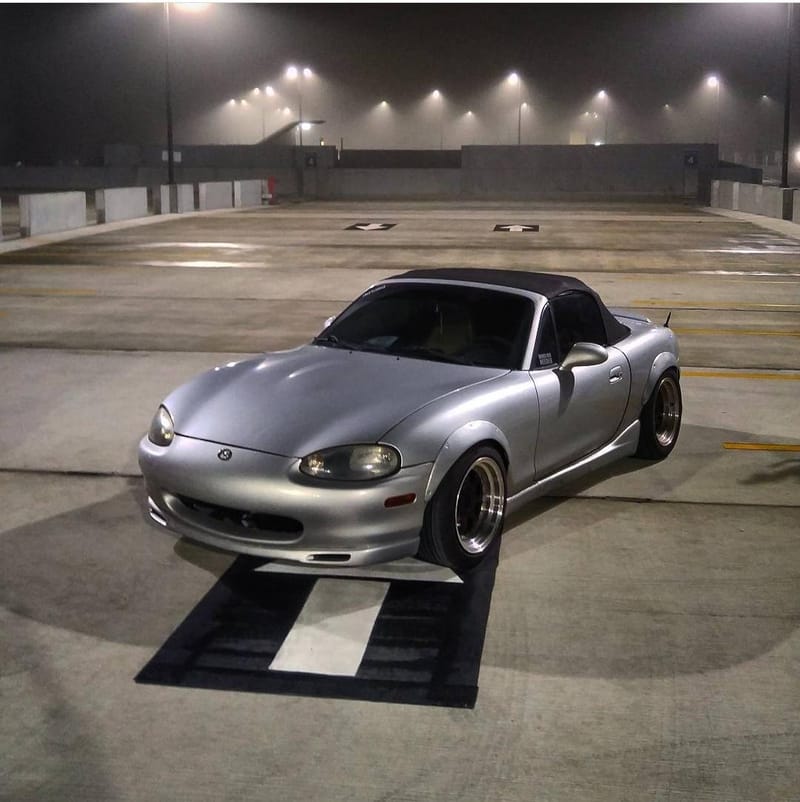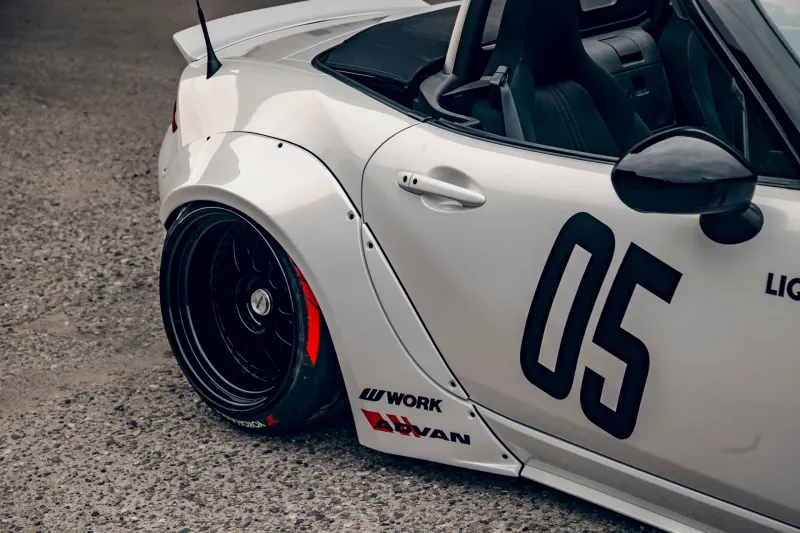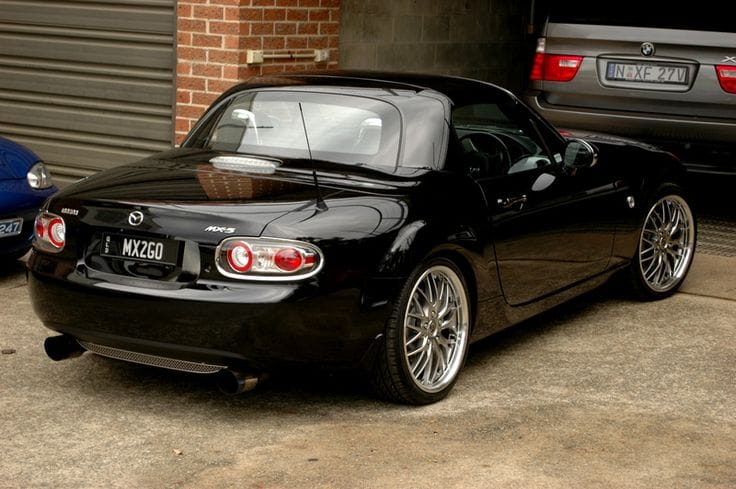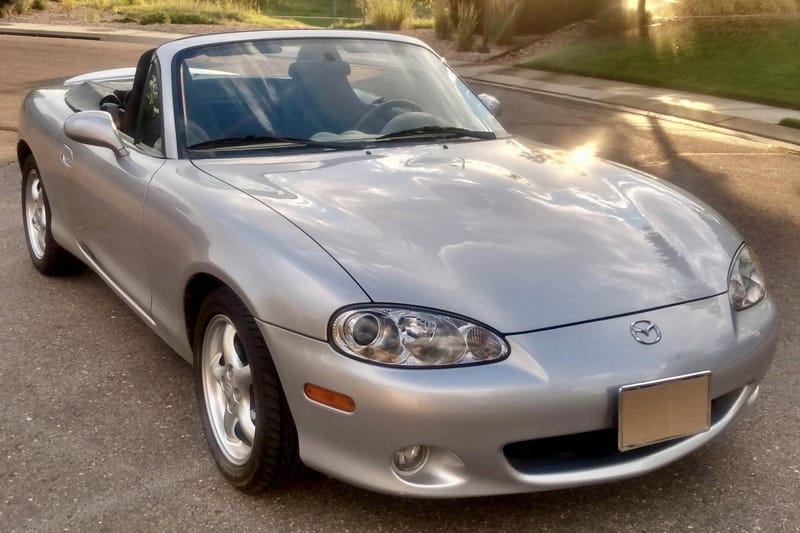Optimizing Your NC Miata – Engine Tuning and Management
The ECU in your Miata is like the car’s brain, controlling everything from the air-fuel ratio to spark timing and idle speed. From the factory, the ECU is programmed with conservative settings that balance performance, emissions, and longevity. These settings are perfectly fine for a stock Miata, bu

The ECU in your Miata is like the car’s brain, controlling everything from the air-fuel ratio to spark timing and idle speed. From the factory, the ECU is programmed with conservative settings that balance performance, emissions, and longevity. These settings are perfectly fine for a stock Miata, but once you start adding mods, like headers or an upgraded intake, the factory ECU struggles to keep up with the new airflow dynamics.
If you’ve recently installed some bolt-on mods on your NC Miata, such as a new header or a cold air intake, you’ve likely noticed an improvement in performance. The engine breathes better, exhaust flow is optimized, and the car feels a bit more responsive. However, you’re probably not unlocking the full potential of these upgrades just yet. That’s where engine tuning comes into play.
While bolt-ons like headers, intakes, and exhaust systems certainly enhance airflow and power, the stock ECU (Engine Control Unit) is still calibrated for the factory setup. It’s not optimized to handle the changes you’ve made to the engine. ECU tuning recalibrates your car’s engine management system to work in harmony with your modifications, unlocking more power, improving throttle response, and ensuring greater efficiency. If you want to take full advantage of your mods, tuning is an essential next step.
When you install these performance parts, your engine has the potential to produce more power. However, the ECU doesn’t know how to take full advantage of these modifications because it’s still operating within the parameters designed for the stock setup. ECU tuning allows you to recalibrate your car’s system, adjusting crucial factors like ignition timing and air-fuel ratios to better suit your new components, thereby optimizing power, torque, and overall performance.
Why Tuning is Crucial for Reliability
Running your car with aftermarket parts without proper tuning can cause more harm than good. When you increase the amount of air flowing into and out of your engine, the air-fuel mixture may become unbalanced, leading to a lean condition where there’s too much air and not enough fuel. Running too lean increases combustion temperatures, which can lead to engine knock—a dangerous form of uncontrolled combustion that can damage your engine.
ECU tuning is critical to prevent such conditions by adjusting the air-fuel mixture to safe levels, especially after installing performance mods. Beyond just performance, tuning is a vital part of ensuring the long-term reliability of your engine. It allows you to enjoy the benefits of your upgrades without putting unnecessary stress on the engine, especially during spirited driving or track days.

Factory ECU vs. Aftermarket Solutions
There are two primary options when it comes to tuning your NC Miata: flashing the factory ECU or installing a standalone aftermarket ECU.
Standalone ECUs, like those from Haltech or Megasquirt, offer unmatched flexibility. They allow you to customize nearly every aspect of your engine’s management, from ignition timing to fuel injection and even advanced features like boost control. This makes them popular among enthusiasts building extreme setups, particularly those with turbocharged or supercharged engines. However, standalone systems can be expensive, complex to install, and often require extensive tuning knowledge to get right.
On the other hand, flashing the factory ECU with software solutions like VersaTune or EcuTek is a more accessible and cost-effective option for most Miata owners. This method involves overwriting the stock ECU with new calibration settings that are customized to your modifications. Unlike standalone ECUs, flashing retains the car’s original safety systems, like ABS and traction control, while still offering the ability to optimize performance. VersaTune is known for its ease of use, making it a great choice for those new to tuning, while EcuTek offers more advanced customization options for experienced tuners.
Flashing Your ECU
Flashing your ECU using VersaTune is a straightforward process, but you’ll need to prepare the necessary tools and software before diving in. First, visit the VersaTune website and purchase a license specific to your NC Miata. This license allows the VersaTune software to communicate with your car’s ECU. Once you’ve got the license, download the software onto a Windows laptop. VersaTune is only compatible with Windows, so you’ll need to use Bootcamp or a similar program if you’re a Mac user.
Next, you’ll need an OBD2 interface, such as an OBDLink SX, which plugs into your car’s OBD2 port (located under the dashboard) and connects to your laptop via USB. With the laptop connected, open the VersaTune software, input your license key, and allow it to load your car’s ECU data. The software will recognize your vehicle, and you’ll be able to select a pre-made tune that suits your mods. VersaTune typically offers Stage 1 and Stage 2 tunes, which are optimized for common modifications like headers and intakes. You can also configure additional settings, such as enabling or disabling the immobilizer, or adjusting Diagnostic Trouble Code (DTC) settings.
Once you’ve selected your tune and made any additional adjustments, click “Flash ECU.” The process usually takes around 5-10 minutes. It’s important to keep both your car and laptop connected to external power during the flash to avoid any interruptions, which could lead to serious problems.

Post-Tune Considerations
After flashing the tune, it’s important to take your Miata out for a short drive, typically around 20-30 miles. This allows the ECU to fully adapt to the new settings. Don’t worry if the car feels a bit rough at idle right after the flash—this will smooth out as the ECU calibrates itself.
If you’ve installed headers without relocating the O2 sensor, there’s a good chance you’ll have triggered a Check Engine Light (CEL). A well-done tune can usually clear this, but if the sensor isn’t in the right spot, the light may come back. Keep an eye on this as you drive post-tune.
Driving Impressions and Performance Gains
Once you’ve taken your car for a spin after tuning, you’ll likely notice a few key improvements right away. The throttle response will feel sharper—your engine will react more quickly to pedal inputs, making the car feel more alive. In terms of power, you’ll experience noticeable gains in the mid-range, particularly between 3,000-6,000 RPM, where the added torque makes the car pull harder.
If you opted for the crackle and pop tune, you’ll also notice a significant difference in the exhaust note. The exhaust will emit pops and crackles when you let off the gas, adding a bit of drama to your driving experience. This feature may not be for everyone, but it certainly adds some character, especially if you enjoy spirited driving.

Engine Management: Maintaining and Monitoring Your Tune
Your OBDLink SX isn’t just a tool for tuning—it can also be used to monitor your engine’s health and performance on an ongoing basis. With the right diagnostic software, you can read and clear error codes, check fuel trims, and monitor other critical engine parameters. Keeping an eye on these diagnostics helps ensure your tune is running optimally and can help you spot issues before they escalate into major problems.
You can also fine-tune your setup for different driving scenarios. For instance, you might want a more fuel-efficient tune for long road trips or a track-focused tune for maximum power and throttle response during performance driving. With platforms like VersaTune, switching between tunes is as simple as flashing a new map, making your Miata even more versatile.
Is Tuning Worth It?
If you’re looking to maximize the performance of your NC Miata, tuning is one of the best investments you can make. Not only does it unlock the hidden potential of bolt-on mods like headers and intakes, but it also ensures that your engine runs reliably under the added stress. The improvements in throttle response, power delivery, and overall drivability are significant, and with the accessibility of modern tuning tools like VersaTune, it’s a process that even novice enthusiasts can handle on their own.
Of course, tuning is just the beginning. As you continue to modify your car—whether you’re thinking about forced induction or just fine-tuning for specific conditions—you’ll find that the ability to adjust your ECU is key to getting the most out of your setup. Ultimately, tuning not only enhances your car’s performance but transforms your driving experience, making your Miata more capable and enjoyable in every way.




